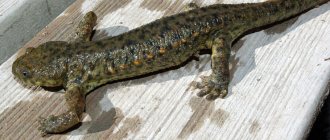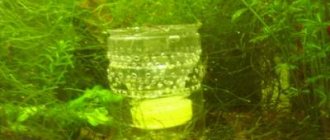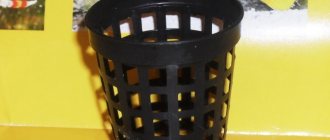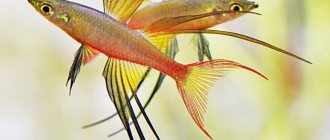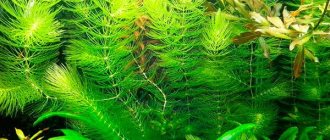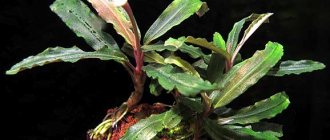Newts in the aquarium
Newts are a general designation for a group of representatives of tailed amphibians, which includes about 20 genera, which, in turn, are divided into many species and subspecies. Not all of them are suitable for keeping in a home aquarium. Let's figure out which newts can be kept in a home aquarium and what conditions are needed for this.
There are three types of newts most often kept in aquariums: common, spiny and crested.
Let's talk in more detail about each of them:
Amphibian or reptile
Newts are amphibians. The fact is that this type of amphibian has two respiratory organs. Larvae initially breathe through gills, but adults receive oxygen through their lungs (transformed from gills) and skin. Some representatives of salamanders spend time almost equally on land and in water, but many species can live in water on a permanent basis.
Newts live all over the globe. This amphibian lives in tropical rainforests in Asia, North and South America.
Everywhere on planet Earth, wherever there are warm bodies of water, newts live
What do you prefer for lunch?
You should think about what newts eat from the standpoint of a balanced diet, food quality and quantity. A healthy appearance and a cheerful lifestyle are the best manifestations of properly organized nutrition.
It is rational to feed adult individuals every other day, but nutritiously and, from their point of view, tasty (so that the food is eaten completely). Small fish, crushed earthworms, and bloodworms are suitable. Minced meat and fish, as well as liver gruel, are useful.
The presence of vitamins and microelements is mandatory (you can purchase synthetic food for amphibians, enriched with mineral components in balanced proportions).
Despite the need for vitamins, such an amphibian will not eat aquarium plants, so there is no need to worry about their integrity.
The baby newt needs to be fed daily. The diet should be enhanced by the content of protein and other biologically active substances.
For larvae, care should be taken to have small crustaceans, insects, possibly daphnia or cyclops. Over time they will accept bloodworms and tubifex worms.
Origin of the species
Newts are members of the salamander family. The amphibian was named after the god Triton, who is often depicted riding a dolphin, with the upper part of the deity having a human appearance and the lower part having a fish tail. By naming the animal this way, ancient naturalists wanted to emphasize that newts lead a directly amphibious lifestyle.
In nature, there are just over 10 species of amphibians, and 3 of them are common in Russia. Newts first became known in 1758 thanks to the Swedish naturalist Carl Linnam.
Even taking into account their fertility, which is quite high, newts are listed in the Red Book. This is due to the deterioration of environmental conditions on the planet due to human activities.
Newts are common inhabitants of home aquariums
Habitat
In nature, newts choose areas where deciduous trees grow and forests are located near bodies of water. Amphibians overwinter in fallen leaves or in burrows, that is, on land, and the rest of the time amphibians live in water. In this case, the water area should be without a strong current or have standing water, for example, a pond or lake.
You can often meet amphibians in city parks, rural areas near residential buildings and summer cottages where there is a body of water nearby. The designated salamander species does not live in wetlands. The fact is that although such a plot of territory has a humid environment, it does not have the required amount of oxygen.
Attention!
In their natural habitat, newts often live for about 10-14 years. When kept in aquarium conditions, amphibians can reach 30 years of age.
One of the most amazing abilities of newts is the regeneration of lost body parts.
What can you feed aquarium newts?
Newts can be fed live food: small bloodworms, earthworms, cricket larvae, etc. If such food is not available, then frozen shrimp and lean white fish can be added to the diet.
Can be alternated with dry food for amphibians. A specialized store will advise you on a suitable manufacturer and tell you about the required dosage and frequency of feeding. Remember that it is advisable for their diet to be varied.
In principle, there is nothing difficult in keeping newts if you follow the basic recommendations. In particular, it is important to periodically clean the aquarium, as well as treat infected individuals. Our specialists specialize in creating and maintaining aquariums, so they will do all the work efficiently and on time. If you have any questions, please call us at our contact phone number.
What does a newt look like?
Each representative of this amphibious amphibian has a number of characteristic external features:
- Body sizes vary from 10 to 12 cm.
- The original color of the body: the main background is olive or chestnut, the belly is orange or juicy yellow.
- Newts have two dark stripes on their heads.
- The skin of the amphibian is smooth, sometimes slightly grainy.
- The tail is long, half the length of the body.
- Males have a luxurious crest running from head to tail.
- The amphibian's paws are equipped with membranes.
Newts are now a popular sight in the aquarium. Juicy original color, touching appearance and special habits make these animals popular and beloved pets.
Types of newts
Among the many varieties of newts, scientists distinguish two broad groups: aquatic newts and amphibians. Each group includes several subspecies, among which only 3 varieties are popular among aquarists:
- ordinary;
- Spanish (spinous);
- comb.
Next, let's look at the popular types of newts.
Common newt
The common newt reaches a length of up to 12 cm, the color is represented by a brownish-olive background with dark spots. Males have a well-developed crest. Despite the unpretentiousness and accessibility of ordinary amphibians, these representatives are timid and do not make contact with the owner.
Common newt
Spanish newt (spiny)
This is one of the most favorite species of aquarists. The body length of the Spanish variety reaches 25-30 cm, the color combines shades of yellow, black and gray. The Spanish newt is suitable for beginners, as it is unpretentious and does not require the construction of a dry area in the tank. An aquarium for spiny newts is suitable with a capacity of 50-60 liters.
Spanish newt
Crested newt
It has brown, rough skin on which warts are located. During breeding, male crested newts acquire a sharp, raised crest. It is impossible to keep a crested amphibian with fish, since the skin glands of the newt secrete a toxic substance.
Crested newt
Chinese newt
The Chinese newt is popularly referred to as the “dwarf newt” due to its small size. The abdomen of the dwarf amphibian has a scarlet or orange tint, on which there are dark spots. Caring for a newt of this species is easy: the amphibian will need a small area of land in a tank, and water temperatures in the range of 20-24C. It should be noted that representatives of this species are aggressive and will not get along with other pets.
Chinese newt
Eastern newt
The Eastern American variety, or red newt - the amphibian received its second name because of its juicy, rich color. Representatives of this species are colored yellow-green or scarlet-orange, and in times of danger they secrete a toxic substance from the skin glands. The amphibian reaches 9-12 cm in length.
Eastern newt
Chinese warty
It has chestnut skin with yellow or orange spots; representatives with a bright stripe on the back are rarely found. The skin of the Chinese variety is covered with warts, which is why the species got its name. The amphibian grows up to 16 cm in length. The warty newt in an aquarium prefers powerful aeration and filtration.
Chinese warty newt
Crocodile
This type of amphibian is extremely beautiful: the body of newts is black, the tail is orange, the body is covered with a bright stripe along the back and spots in the form of warts. The skin of the crocodile newt is shiny. Representatives of this species reach 17 cm in length. At home, when keeping a crocodile amphibian, a large area of land is built for the pet.
Crocodile newt
The above varieties are considered common and often become pets. However, there are other, rarer species, some of which are even listed in the Red Book (presented below).
Marbled newt
It has a black belly, on which light spots are randomly located. The main background of the body is olive with dark splashes, which is why the look is called “marble.” Body length – up to 17 cm.
Marbled newt
Iranian newt (Zagros)
A very expensive and rare representative. The high price is due to its incredible appearance: the color combines light, red and dark tones. In addition, the Iranian variety is protected, and the specimens that go on sale are picky about their maintenance conditions.
Spine newt, also known as ribbed newt (Pleurodeles waltl)
Mud ribbed newt photo
The conditions for keeping the spiny newt are not much different from the ordinary one, however, it is worth considering that Pleurodeles waltl is much larger (up to 23 centimeters), accordingly, it needs a larger aquarium. Females of this species are usually larger than males, but they have a shorter tail.
Mud ribbed newt photo
When keeping this species, it should be taken into account that they have pointed ends of the ribs on their sides, which, when in danger, secrete a poisonous, very burning substance. It can damage the skin, and in some people cause an allergic reaction, even fatal, so it is better not to touch the ribbed newt with your bare hands.
Keeping newts (4 important rules)
Despite the fact that amphibians prefer to lead a free lifestyle, newts easily adapt to home conditions, successfully existing in terrariums.
Before you decide to get an exotic pet, you should carefully study the features of keeping amphibians, how to feed newts and how these amazing creatures reproduce in order to get offspring in the future.
To keep newts, you must follow 4 important rules:
- Newts need a spacious aquarium with a floating raft or a terrarium with an island with dry land. The volume of the tank is determined depending on the size of the pets; for two medium-sized animals, a container with a capacity of 50-60 liters is suitable.
- Pebbles or fine gravel are chosen as the soil. It is important that the substrate does not have sharp edges, otherwise pets will injure the delicate skin. Living plants must be planted in the terrarium, both in water and on land, to create a natural habitat for amphibians.
- In addition to living flora, there are shelters on land and in water: pieces of bark, coconut shells. The house is equipped with a lid, since these amphibians are extremely inquisitive and love to run free.
- The most important condition for successfully keeping amphibians is the need to constantly maintain the desired temperature - within 18-22C. To maintain the desired temperature, special cooling systems are used, or “homemade” methods are used: bottles with ice, fans and coolers.
The temperature in the terrarium must be maintained within 18-22C
Reproduction
Newts reach sexual maturity at three years of age. The amphibian reproduces well in captivity, but it is necessary to create optimal conditions for breeding.
Amphibians breed in the spring. After hibernation, the color of the males becomes saturated, which indicates readiness for fertilization. The male and female are transplanted into a separate tank where they breed. The temperature in the breeding terrarium should be no higher than 18 degrees.
The fertilized female is placed in another terrarium with dense green thickets. She will lay her eggs in the bushes, wrapping them in leaves. In a month, offspring will appear from the eggs.
What do newts eat?
Newts are predators, and in the wild they feed on anything that moves and is of a suitable size. Accordingly, in captivity it is necessary to feed newts with live food, using only high-quality and proven food.
What to feed a newt:
- Medium sized bloodworm.
- Shrimps.
- Pieces of fish fillet.
- Earthworm.
It should be noted that an amphibian may not recognize stationary food, so it is preferable for the “food” to move. If the owner decides to feed the pet fish fillet, then it is served with tweezers, slightly swaying in front of the amphibian. Pets will determine the frequency of feeding themselves - unlike other amphibians, amphibians are not prone to overeating and will not eat too much. Young newts are usually fed once a day, adults - once every 2-3 days.
Several newts in one aquarium. Can?
Newts can be placed in an aquaterrarium either individually or in groups. To avoid bloody fights and ensure peaceful coexistence of amphibians, it is recommended to follow an important rule: for one male you need to buy 2-3 “ladies”. If this balance is upset, violent conflicts will begin between males over females, because these seemingly peaceful animals can turn out to be extremely warlike.
From time to time, newts shed their old skin. This usually happens after the end of the mating season. Triton begins to shed old “clothes” from the head. He rubs it against wood and pebbles, the skin bursts and the amphibian little by little “crawls” out of the old “suit”, remaining only in an almost transparent skin. Triton always tries to swallow old skin, but it doesn’t work out right away. A person is unlikely to be able to observe this interesting process, because newts are nocturnal animals, and molting often occurs precisely at night.
Compatibility
Unfortunately, having made a choice in favor of newts, every aquarist should know that this amphibian will not get along with fish for the following reasons:
- Different content requirements.
- Many amphibians secrete toxic mucus that will harm the fish.
- Most species are aggressive.
But if the owner really wants to diversify the aquaterrarium, then you can add the following to the newts:
- Medium-sized calm fish, such as platies.
- Medium-sized catfish with a calm disposition.
- Large ampularia or aquarium hymenochirus frogs.
Compatibility with other animals and fish
Sharing with fish is questionable, since fish require water with a temperature of about 25 degrees; in cool water the fish will die. Amphibians are cold-blooded animals, so they get sick at high temperatures.
Who does the salamander get along with:
- guppy;
- zebrafish;
- neons;
- cardinals.
Don't be surprised if one day you are missing a few fish, as amphibians can feast on small fish. In addition to fish, you can keep newt with shrimp, frogs, and snails.
Experts allow several representatives of amphibians to be placed in one terrarium, but it is better to buy individuals of the same species. They will play and communicate with each other.
Wintering
In their natural environment, newts enter the stage of suspended animation (that is, hibernation) in winter. In its natural habitat, the amphibian chooses a place to sleep on land, for example in a pile of fallen leaves or a small abandoned hole. At the same time, amphibians are grouped into small flocks (from 10 to 30 individuals), thereby increasing the chances of survival during the cold season. They often choose a shelter for the winter approximately 50-100 meters from the reservoir, where they spend the active phase of life.
In the case of home keeping, the wintering period usually begins at the end of October or beginning of November. At this time, the animal is provided with a temperature of 15C and a suitable place for wintering. If, in addition to newts, the aquarium also contains tropical fish, it is worth considering the option of transferring the newts to a separate cool tank.
The newt emerges from suspended animation in the spring, when a stable, albeit low, positive air temperature is already maintained outside. In nature, immediately after waking up, newts head to a pond to move on to another life cycle - reproduction.
Possible neighborhood
Newts can be kept alone or in small groups of the same species. But the rule should be followed - there should be 2-3 females per male, otherwise the males may conflict with each other. You can also keep other peaceful pets with newts, but they should all be about the same size.
Keeping newts in an aquarium with fish is undesirable for several reasons:
- different conditions of detention (temperature and volume of water);
- general diseases;
- small fish can be perceived by newts as food;
- large predatory fish can harm amphibians;
- Some species of newts can secrete toxic substances.
And yet, if desired, you can keep amphibians together with small, unpretentious fish (guppies, corydoras, neons, platies). You can also place other inhabitants in the aquarium - large snails, hymenochirus frogs, cherry shrimp.
How do newts reproduce?
At home, newts readily reproduce, so the long-awaited offspring will not be long in coming. Before the mating season begins, the owner must understand how to distinguish a female from a male:
- Male amphibians are more active during the mating season.
- Males develop a pronounced comb.
- Females are smaller in size than males.
Reproduction of newts usually occurs in the spring, after the end of wintering. An important condition for breeding is a decrease in water temperature and its replacement. Pets of different sexes are placed in one container, where the process of internal fertilization occurs. Then the pregnant amphibian is moved into a separate aquarium with a large number of small-leaved plants - it is in the leaves of grass that the pets lay their eggs. Little newts will be born after 30 days, and after a couple of months they will take on the appearance of an adult amphibian.
Crested newt (Triturus cristatus)
Crested newt photo
In size, this is the average type of newt of the three described, they grow up to 18 cm, the body is brown to black in color, and the abdomen is orange. Very similar to the common newt, you can distinguish it by its crest. The crested newt has an intermittent crest, while the common newt has a continuous crest.
Crested newt photo
The skin of this newt has poisonous glands, the effect of the poison is similar to that of the spiny newt.
Diseases
Newt diseases are mainly associated with improper diet and maintenance of amphibians. Also, amphibians often develop a disease such as pneumonia, which is a consequence of the penetration of parasites into the pet.
In addition to injuries and damage, common ailments include:
- Fungal diseases that affect the skin of pets.
- Sepsis is thought to be caused by microbes that enter the blood of amphibians.
- Dropsy is an accumulation of fluid in tissues.
If you discover that your pet is feeling unwell or has external abnormalities, you should seek advice from a specialist who will make a diagnosis and prescribe treatment.
Newt's dropsy
Interesting Facts
Newts are not only amazing tailed amphibians that can be kept at home. These animals are of interest due to their unique abilities, for example:
- Newts can remain without water for a certain period of time, provided they have the opportunity to hide in a humid environment. This could be a thick layer of algae in a dry pond or silt deposits. The main thing is to keep the skin wet.
- This type of amphibian has the ability to regenerate. This means that in the event of the loss of some part of the animal’s body, it is restored over time, up to the growth of a new eye or internal organs.
- Adult amphibians are able to stay under water for a long time, since they have the ability to extract oxygen from the water with their skin, and thanks to the presence of lungs, they move freely on land, albeit somewhat clumsily.
- During spawning, the female attaches each egg to a leaf of algae, but at the same time wraps it taking into account the water flow. That is, the water flow must hold the curved tip of the leaf until the egg hidden in it hatches.
- On the tail of the newt there is a leathery strip (rim), thanks to which it extracts oxygen from the water. But if representatives of the salamander family switch to an earthly lifestyle, then this “suture” atrophies.
- A characteristic feature of representatives of salamanders is that the stomach of newts is practically filled by 70-90% if it lives in water, but on land only by 65%.
- Amphibians can also make sounds that last about 0.5 seconds and are produced at a frequency of 3,000-4,000 Hz.
Newts are capable of secreting toxic substances through their skin, which can be dangerous to neighbors in the aquarium. The poison eliminates platelets in the blood, which in turn leads to cardiac arrest. Therefore, the neighborhood for amphibians must be selected taking into account this feature of the designated species of aquatic animals. They pose no danger to people.
Newts are unusually hardy; they tolerate low temperatures and temporary drying out of water bodies well.
Natural enemies
As for the enemies of newts, in their natural habitat the danger is mainly represented by fish, frogs, and vipers, which live together in reservoirs. Birds and other species of animals can also feast on the designated species of amphibians if they were encountered on land. It is not uncommon for larger amphibians to eat their smaller relatives. In an aquarium, it is better to refrain from introducing other types of aquatic life, even such as an aquarium frog, in order to avoid being eaten by amphibians.
Population and species status
Due to their fertility, namely the ability to lay about 700 eggs in one mating season, females help maintain a stable population level. But there are several reasons why the number of salamanders in many areas has decreased and continues to decline.
The main ones are:
- The life cycle is quite short, since newts have many enemies in their natural habitat.
- Lack of food due to shallowing of water bodies where amphibians live.
- The reason for the population decline is also considered to be artificial drainage of amphibian habitats.
- Water pollution affects the development and reproduction of animals, because for them, clean water is the key to health.
Climate change is also important. The fact is that newts prefer moderate coolness, and an increase in air temperature and, accordingly, water is destructive for them.
Newts love the company of their own kind.
Meaning for humans
Newts, despite their small size, bring significant benefits to humanity. These small amphibians destroy the laid eggs of mosquitoes in bodies of standing water in which they live. By consuming mosquito eggs and larvae in their diet, including malaria ones, they rid the environment of insects that can carry dangerous diseases. Also, the designated species of amphibians helps reduce the number of slugs and small mollusks.
Aquarium newts are rare pets that will decorate and enliven any tank. Despite their natural modesty and timidity, many species of amphibians willingly make contact with the owner, and maintaining and caring for these representatives of amphibians will not require much effort and time of the owner.
Do you already keep these amphibians in your aquarium? How are your impressions? Share in the comments!
Feeding
The common newt, like its other relatives, prefers live food. Tubifex, bloodworms, small aquarium shrimp and snails, cockroaches, crickets - all this can be safely included in your pet’s diet. As a top dressing, it is best to use beef liver and squid, chopped into small pieces. Newts, despite a certain endurance, are very picky when it comes to food, so its quality should never be neglected.
An important point: if you keep newts with fish or other aquarium inhabitants, make sure that your neighbors do not eat the amphibians. To ensure your pet gets food, you can place pieces of food with tweezers, directly to its face.
- The amphibian larvae are fed with small crayfish and insect larvae. To complete the diet of young newts, small daphnia, cyclops, and a little later - tubifex and bloodworms are introduced into it.
- Individuals under 2 years of age must be fed every day. As they grow older, the feeding schedule is reduced to once every two days. There is no limit on the amount of food - you can feed the newt until he refuses to eat.
Return to content

